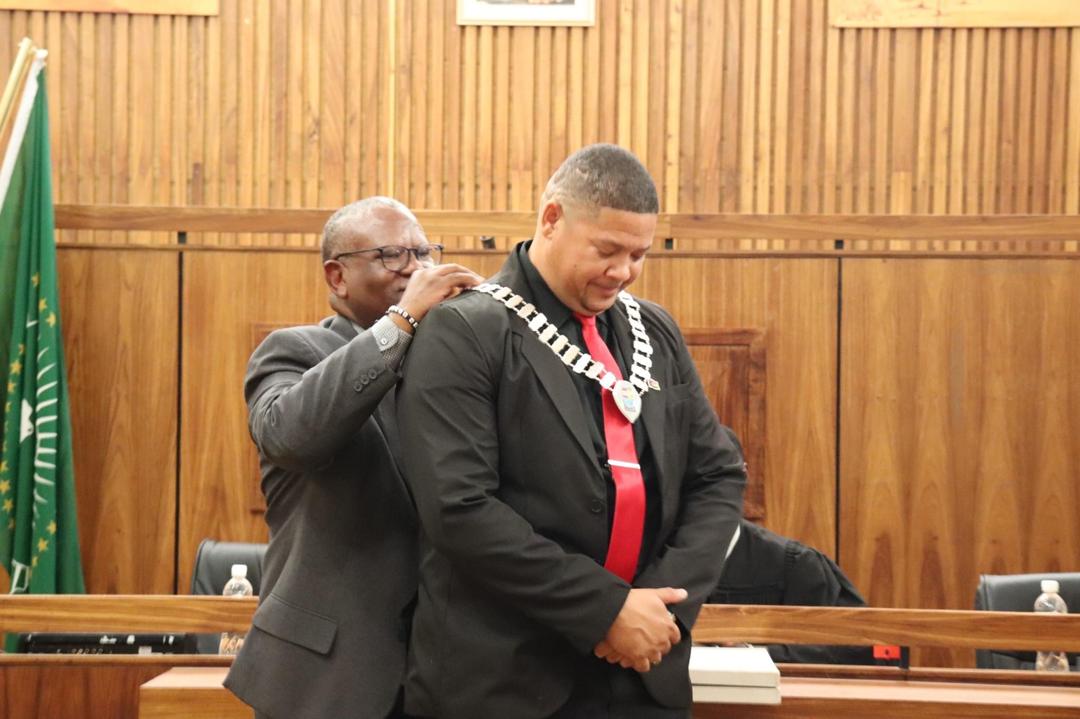Classroom shortages continue to haunt some regions despite the government building 2 065 units – some still incomplete – at a cost of N$578 million since 2019.
The government has built 1 561 classrooms since 2019 until March this year, and an additional 474 classrooms are currently under construction by August 26.
The United Nations Children’s Fund (Unicef) in its education brief for 2023/24 said the current classroom shortage stands at over 4 400.
Ohangwena education regional director Isak Hamatwi says the Ohangwena region is experiencing a huge backlog and needs about 400 more classrooms.
“We have many schools which need classrooms – proper classrooms. Most of the schools in the rural areas have classrooms made out of zinc. “There is more to be done. The thing is, we have population growth. We have a larger number of learners and the resources are not matching up to build enough classrooms,” he says.

Hamatwi says the region does, however, not teach children under trees, but rather in classrooms made from zinc plates.
This week, New Era reported that the Oshikoto directorate of education, arts and culture has pointed out there are 528 temporary classrooms in the region that are not conducive for teaching and learning. Oshikoto deputy director Tomas Kalimbo says these consist of prefabricated classrooms, sheds, tents and shacks. He says all temporary classrooms have to be replaced with permanent structures if schools are to improve teaching and learning conditions.
“None of those are the classrooms we desire, as they are not conducive for teaching and learning,” he says.
Erongo education director Ernfriede Stephanus says the government has built a total of 195 classrooms in the region since 2019.
“Although it is indicated as classrooms, we built two project schools: Maturara Primary School and Matutura Primary School. For the new senior primary school, two blocks of eight classrooms are being constructed,” she says.
Acting //Kharas regional director Jesmine Magermann on Monday said some of their classes are overcrowded with about 14 pupils.
“So, we will definitely need more classrooms next year, but this year, 25 classrooms were built under August 26 . . ,” she said.
Magermann said 13 extra classrooms were completed.
“So, hopefully our needs will be addressed next year, with more classrooms, but for now, we don’t have that uncomfortable situation of having to teach in makeshift classrooms,” she said.
The acting director said they need a few more classrooms for next year.

“We have started with two new primary schools. We just started with the one with five classrooms, and with six classrooms at the other,” she said.
Magermann said they will hopefully have ten more classrooms next year.
Executive director of education, arts and culture Sanet Steenkamp last Wednesday said the ministry’s biggest needs are infrastructure and more schools, not just classrooms.
“We need primary and secondary schools to be constructed in a much shorter time frame than the current Medium Term Expenditure Framework cycle, where it takes years for a school to be constructed,” she said.
This infrastructure also includes libraries, resource centres, laboratories, sanitation facilities and dining halls for pupils.
“To do that, you need to have a targeted intervention and a targeted budget only for infrastructure development,” she said.
Steenkamp said this requires a review of procurement methods as prescribed by the act.
“To see what worked over the years, what didn’t work, how can we still within the Public Procurement Act expedite the construction of this much-needed infrastructure . . .” she said.
The Namibian last year reported that the Namibian Defence Force company August 26 Construction was to build classrooms and ablution facilities at public schools countrywide to the tune of N$255.5 million.
Stay informed with The Namibian – your source for credible journalism. Get in-depth reporting and opinions for
only N$85 a month. Invest in journalism, invest in democracy –
Subscribe Now!






